Nov.21, 2019
Many intermediate Chinese learners believe the "把ba" structure is one of the biggest headaches with correct grammar use in their Chinese textbook.
But first, you definitely should feel proud of yourself when you see this grammar appear in your textbook, because "把bǎ" isn't simply an independent piece of grammar, it indicates you've laid a solid foundation of Chinese grammar system and are officially achieving an intermediate level.
Congratulations!
When you start to learn the "把bǎ", the teacher emphasizes to you that it's a special and difficult structure and you need to pay close attention. Then you will be faced with a lot of grammar drills and exercises to make sure that your word order with "把bǎ" won't be messed up.
But after all these, are you doing well with the "把bǎ" structure?
I have many "laowai" friends, to be honest, I can hardly hear the perfect "把bǎ" application. Take a look at this example that they often say:
放这个杯子在这里。
Fàng zhège bēizi zài zhèli.
This is supposed to mean:
Put this mug here.
But it obviously is a translation from English into Chinese still holding the English grammar structure.
So how can we understand the "把bǎ" structure without translating English?
Follow the Slow Motion Technique!
Understand the "把bǎ" as "take, grab".
Then play the scenarios in your mind like a movie in Slow Motion.
First, you take this mug- "把杯子 bǎ bēizi"
Then, you put the mug here-"放在这里 fang zài zhèli"
You see? In this way, you just got the perfect native sentence:
把这个杯子放在这里
Bǎ zhège bēizi fàng zài zhèli.
If you're still confused with the structure, read the articles below to understand "把bǎ" better by using Slow Motion Technique:
How to Conquer the "把bǎ" Structure With One Rule?
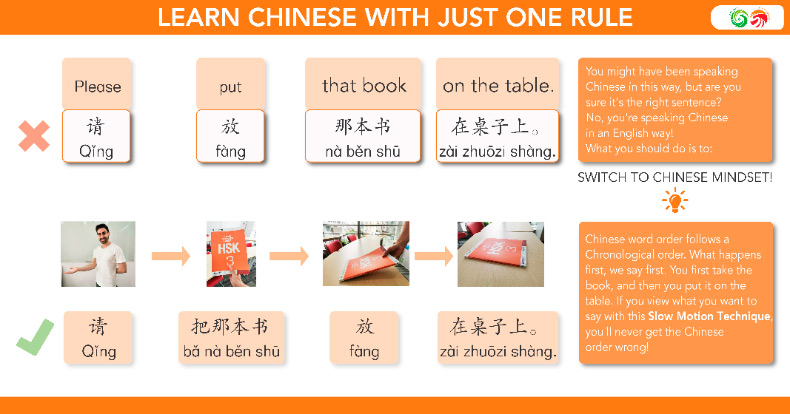
Now probably you can understand the grammar of the "把bǎ" structure, but are you applying "把bǎ", one of the most frequent structures in Chinese grammar, in your daily life?Are you clear when to use the "把bǎ" in your Chinese expression?
That is the problem I want to tackle in the article!
Textbooks say, "a 把bǎ sentence can be used to indicate a certain action done on a definite person or thing, changing the location or bringing a result to the person or thing."
Well, even when you are not lost right now, it surely won't help you a lot in applying the "把bǎ" structure. So let me show you a case where you can maximumly use "把bǎ". I'm sure you will apply it more easily after you finish this article.
Believe it or not, introducing a recipe is a perfect way to help you understand "把bǎ" and therefore boost your application.
Yes! Cooking can help to apply the "把bǎ" structure!
So what are we going to cook today?
A popular home-style Chinese dish - Chinese Stir-Fried Tomatoes and Eggs, 西红柿炒鸡蛋 Xīhóngshì chǎo jīdàn!
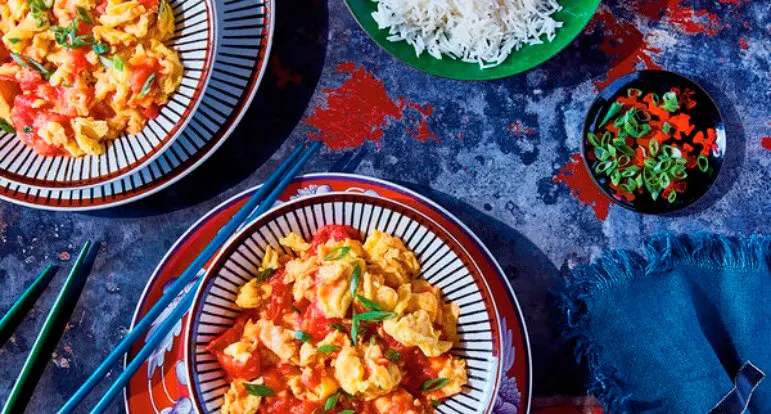
All the pictures below are the instructions of the corresponding "把bǎ" structures.
You can see "把bǎ" is used for most of the actions dealing with the cooking ingredients (including cutting, moving and changing, etc.) Don't forget to think in a slow-motion way to make the "把bǎ" structure order make sense to you!
Let's get started!
STEP 1
Take the eggs and break (them) in a bowl.
把鸡蛋打在碗里。
Bǎ jīdàn dǎ zài wǎn lǐ。
STEP 2
Take 1 teaspoon of salt, a teaspoon of sesame oil and a teaspoon of rice wine or sherry and put them in the bowl.
把一勺盐、一勺芝麻油和一勺料酒放进去。
Bǎ yì sháo yán、yì sháo zhīma hé yì sháo liàojiǔ fàng jìnqu。
STEP 3
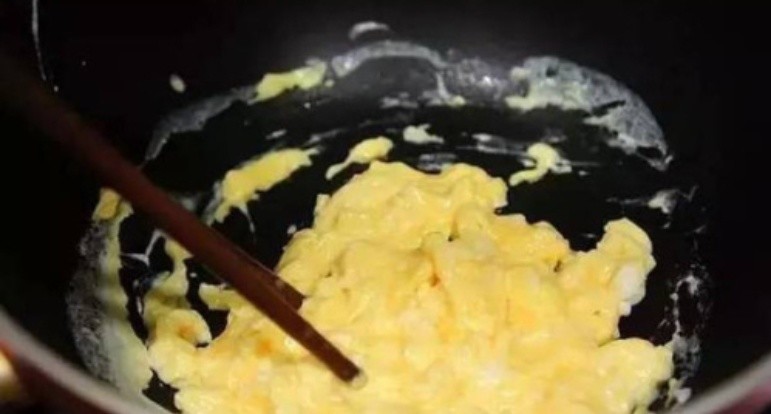
Mix them.
搅拌。
Jiǎobàn。
STEP 4
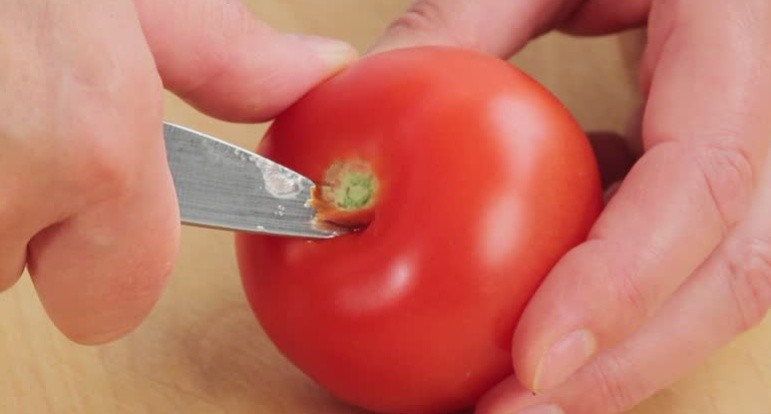
Core the tomatoes.
把西红柿芯去掉。
Bǎ xīhóngshì xīn qù diào。
STEP 5
Take the tomatoes and cut them into 1/2-inch wide wedges.
把西红柿切成半英寸宽的块儿。
Bǎ xīhóngshì qiē chéng bàn yīngcùn kuān de kuàir。
STEP 6
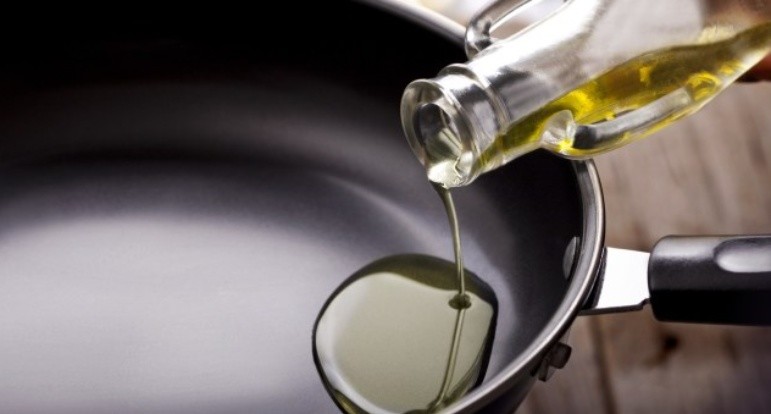
Take 3 tablespoons of vegetable oil and pour it into the frying pan.
把3勺油倒入锅里。
Bǎ sān sháo yóu dào rù guō li。
STEP 7
Take the pan and heat it over high heat.
把锅加热 (高温大火)。
Bǎ guō jiā rè(gāowēn dàhuǒ)。
STEP 8
When the oil shimmers, take most of the scallions and put into the pan, saving some to garnish.
油热以后,把大部分葱放入锅里。留一部分葱。
Yóu rè yǐhòu,bǎ dà bùfen cōng fàngrù guō lǐ。Liú yí bùfen cōng。
STEP 9
Cook, stirring, until very aromatic, about 20 seconds.
炒大概20秒,直到有香味。
Chǎo dàgài èrshí miǎo,zhídào yǒu xiāngwèi。
STEP 10

Take the eggs and add into the pan and cook, stirring well, until just set but still runny, about 45 seconds. Take the egg and pour them back into the mixing bowl. Take the pan and wipe it out.
把鸡蛋加进去炒,直到刚好(just)凝固,大概45秒。把鸡蛋倒回碗里。把锅擦干净。
Bǎ jīdàn jiā jìnqu chǎo,zhídào gānghǎo nínggù,dàgài sìshíwǔ miǎo。Bǎ jīdàn dào huí wǎn lǐ。Bǎ guō cā gānjìng。
Reheat the pan over high heat with a tablespoon of oil. When it is hot, take the ginger and add it. Cook until aromatic, about 15 seconds. Take the tomatoes and put them in. Take salt and put it in. Cook, stirring occasionally, 2-3 minutes.
STEP 11
重新把锅加热(高温大火)。把一勺油倒进锅里。把姜加进去,炒大概15秒,直到有香味。把西红柿放进去。把盐放进去。炒一下,大概2-3分钟。
Chóngxīng bǎ guō jiārè (gāowēndàhuǒ)。Bà yì sháo yóu dào jìn guō lǐ。Bǎ jiāng jiā jìnqù,chǎo dàgài shíwǔ miào,zhídào yǒu xiāngwèi。Bǎ xīhóngshì fang jìnqù。Bǎ yán fang jìnqù。Chǎo yíxià,dàgài liǎng-sān fēnzhōng。
STEP 12
Reduce the heat to medium.
把火关小到中火。
Bǎ huǒ guān xiǎo dào zhōnghuǒ。
STEP 13
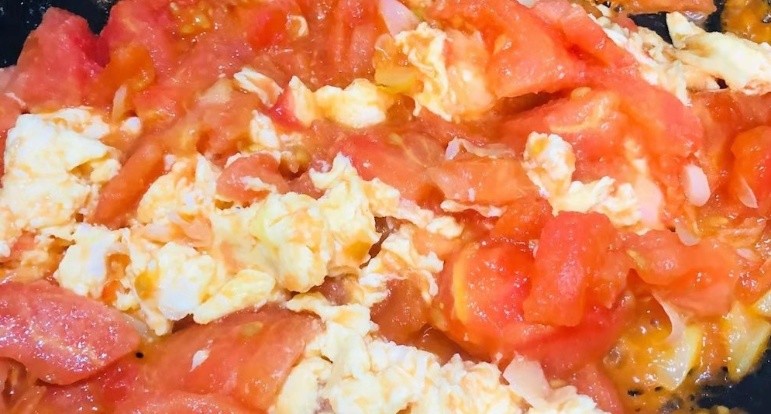
Take the egg and stir the eggs in the bowl to cut up the curds a bit, then take them and return them to the pan. Cook, stirring, for a few seconds.
把鸡蛋在碗里搅碎,然后把鸡蛋放回锅里炒几秒。
Bǎ jīdàn zài wan li jiǎo suì,ránhòu bǎ jīdàn fàng huí guō li chǎo jǐmiǎo。
STEP 14
Take the salt and sugar and put them in. Adjust seasoning.
把盐和糖放进去,调味。
Bǎ yán hé táng fàng jìnqu。Tiáowèi。
STEP 15
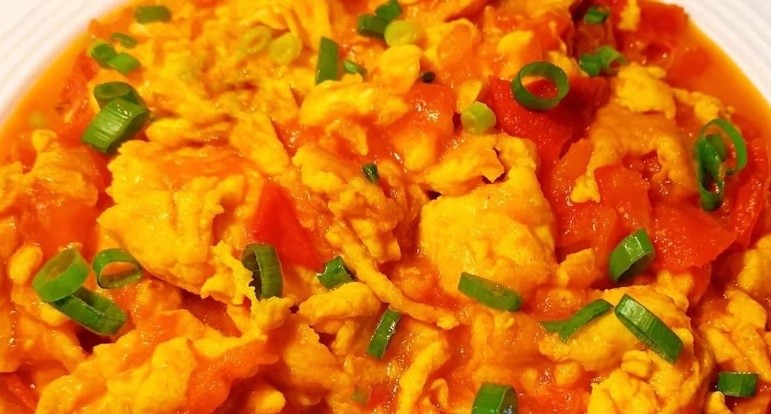
Take the reserved scallions and top with them.
把剩下的葱放在上面。
Bǎ shèngxià de cōng fàng zài shàngmian。
See? I used 20 "把" sentences to explain how to deal with the food material in cooking. That's how you can understand a "把bǎ" sentence and how it can be used to indicate "a certain action done on a definite thing".
So, now you know how can you force yourself to use the "把bǎ"?
Practice like this: When you cook, SPEAK every step in Chinese OUT ALOUD!
Most Popular Posts
